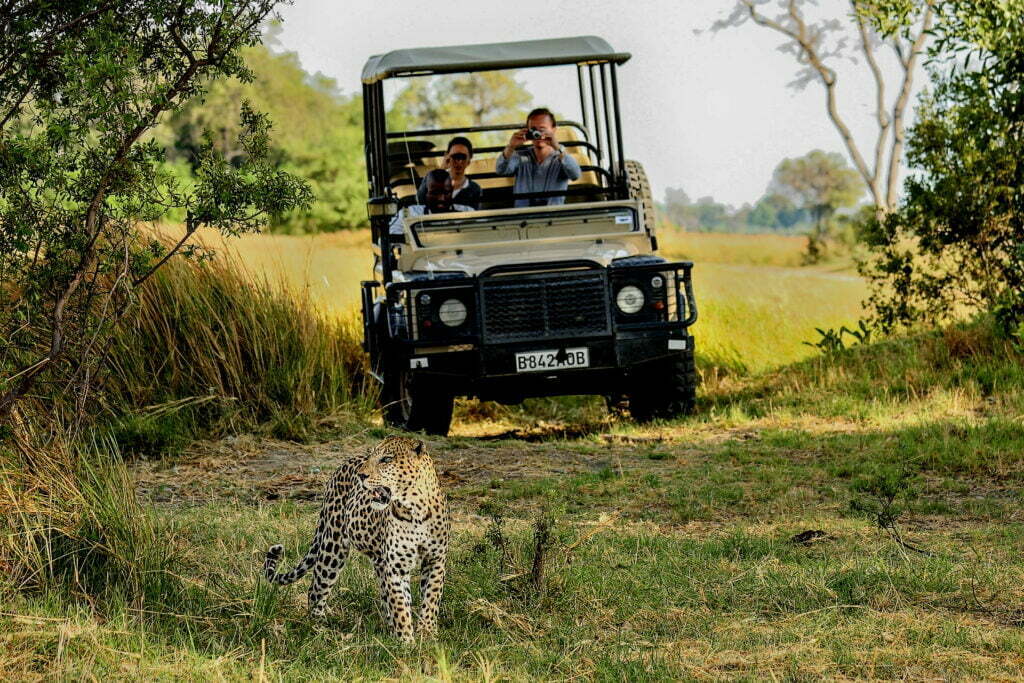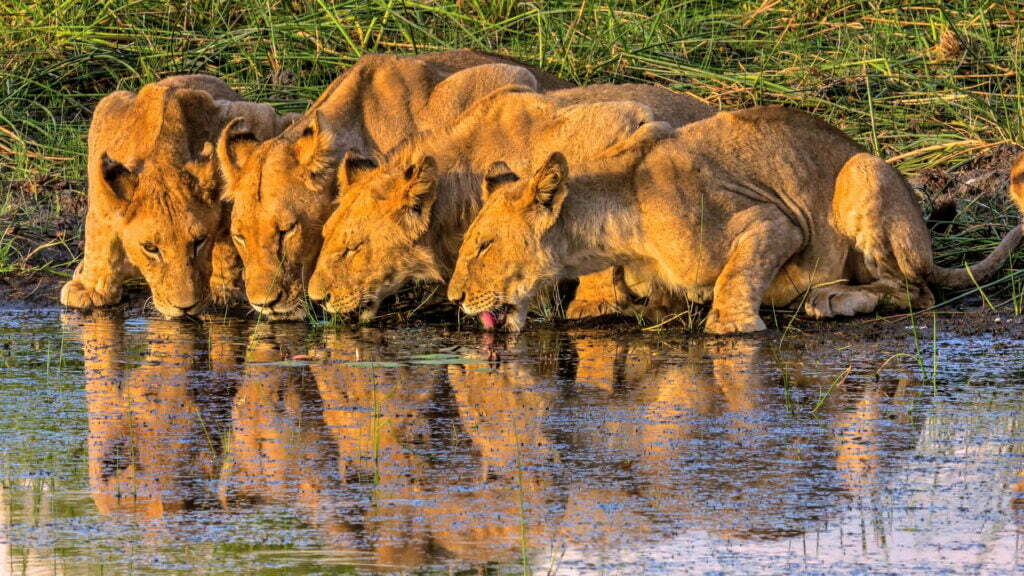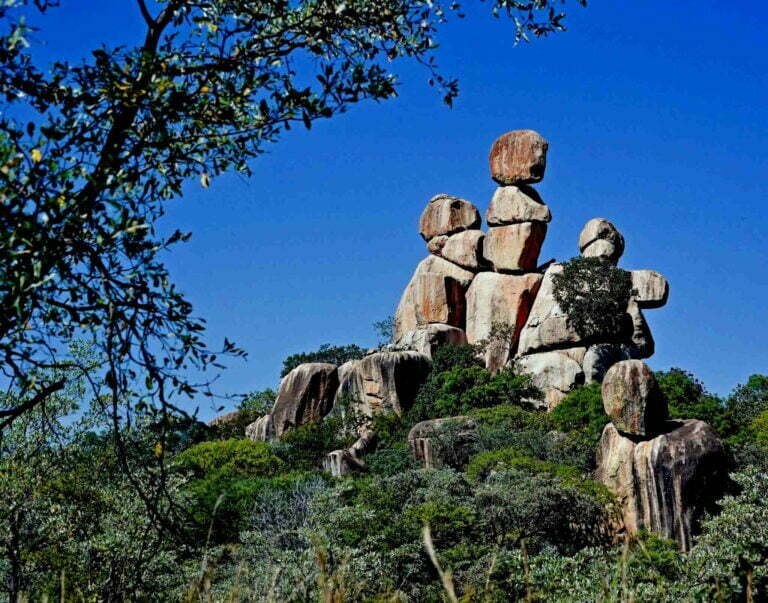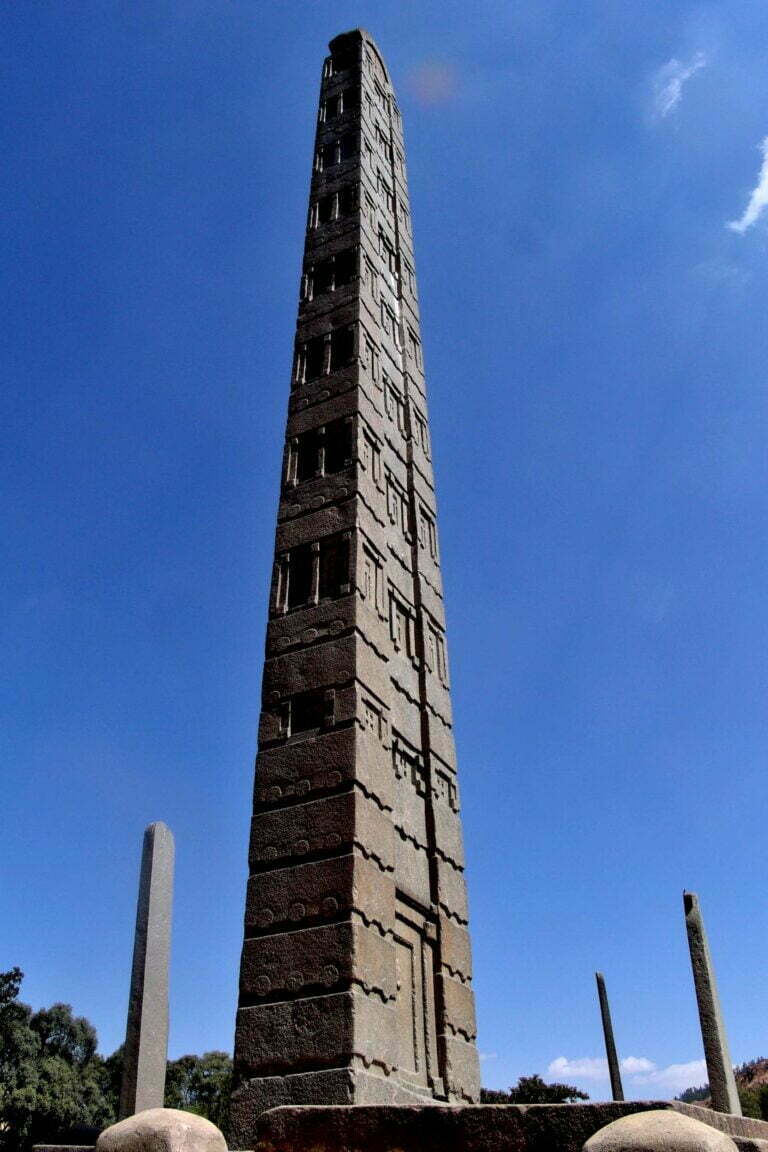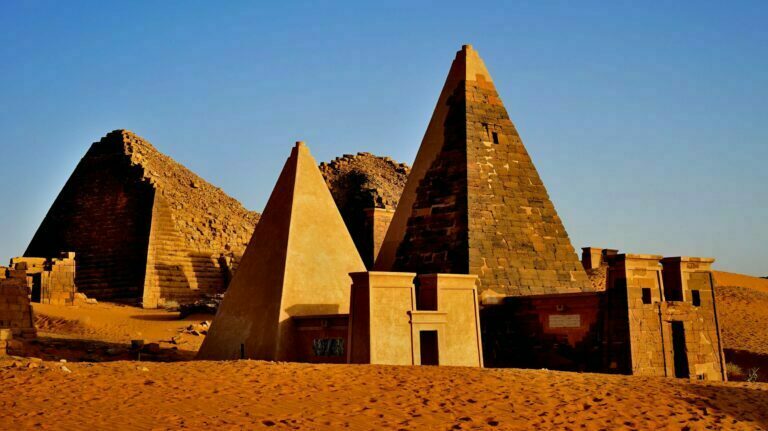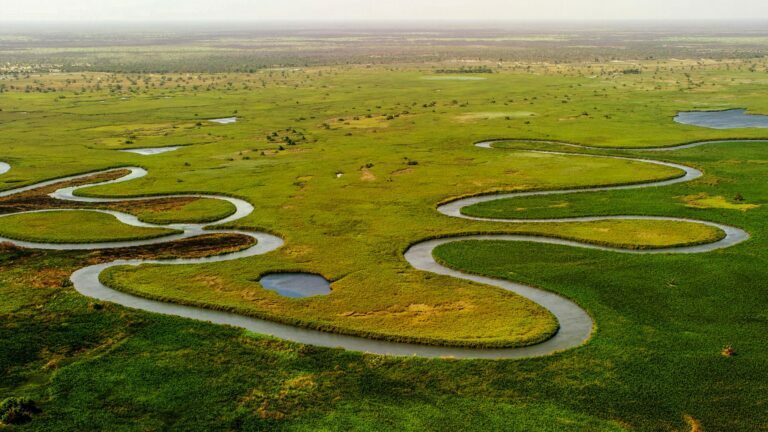Botswana’s Okavango Delta was named a UNESCO World Heritage Site in 2014. The Okavango Delta is a place that shouldn’t be there. Let me explain. Learn more about Botswana by reading about the real story of the Okavango Delta.
Think about how most deltas are large wetland areas that form where rivers empty into the sea. For example, the Ganges River in India empties into the Bay of Bengal, and the Niger Delta spreads out like a fan into the Gulf of Guinea.
Okavango Delta History
Now, take a look at a satellite image of the Okavango Delta, which is an 18 000 square kilometer wetland wilderness full of wildlife that appears out of nowhere in a huge dry sand basin in northern Botswana.
You have to stop and think, “Isn’t this strange?” What went wrong? In the faraway highlands of Angola, where the wetland is now, it all started with a small stream.
The trickle isn’t very interesting. If you saw it while wading through the thick miombo bush, you might say how nice it is to see a stream and move on to something more interesting.
Where is the Okavango Delta
But this drip is just the start of a 1000-kilometer river trip through three African countries. From its source in the highlands of Angola, the trickle joins with other small rivers to make the Cuito, a bigger river. The Cuito keeps going south toward Namibia.
When the Cubango River joins it, it gets bigger and faster. At the end of it all is the powerful Okavango River. The Okavango Delta is only 60 000 years old, which is not very long in geological terms.
How Big is the Okavango Delta
Before the delta was made, the Okavango River flowed right through Botswana and emptied into a huge lake somewhere near the Makgadikgadi pans in Botswana. This was about two million years ago.
Rivers are hard-wired to flow toward lakes, seas, and other large bodies of water. But then, about 50 000 years ago, Southern Africa was hit by a huge earthquake. Near the border between Botswana and Namibia, the land moved up a little bit.
This changed the normal flow of the Okavango. It was a surprise for the river. Water didn’t have a choice. 11 trillion liters of water poured out into the desert like oil in a pan, flooding a huge area with a steady stream of fresh water.
The Okavango Delta is the greatest natural oasis on Earth. It was made by a strange geological accident. Papyrus and other swamp grasses grew tall, fish populations grew, and a great variety of colorful, flying birds moved in.
Okavango Delta Animals
Hippos found paradise (No hippo is happier than one in the Okavango), making mazes and paths for other animals to follow through the wet brush. The tops of termite mounds turned into large islands with lots of plants and animals.
On the edges of the islands, huge fig and jackalberry trees grew, and monkeys, baboons, and leopards lived in their branches. Elephants did well, and lions learned to hunt in swamps and bogs, getting over their fear of water and taking on buffalo and giraffe as big prey.
The Okavango is still as wild as the day it was made. Every year, the area of the Okavango Delta that is flooded varies between 6,000 and 8,000 square kilometers. During the flood, this area can grow to up to 15,000 square kilometers. People haven’t moved in because of the swamps and floodplains, and the wildlife is still as wild as it was 10,000 years ago.
There are now more than 150,000 islands in the Delta. Their sizes range from a few meters to bigger than a city. The largest island is Chiefs Island, which is in the middle of the delta. It’s like a big time capsule, a picture of old Africa, with big herds of elephants lumbering across the plains and big prides of lions stalking the night.
The only real way to see this natural oddity is to fly into the delta. As you take off from the dusty town of Maun, the landscape below changes from a gray desert to a sea of crystal-clear water with a patchwork of green islands stretching as far as the eye can see.
At first, it’s hard to understand. Things shouldn’t be so good. Then, as the hippos poke their heads out of the water and look up, and as the herds of red lechwe splash through the diamond floodplains, you realize that this natural accident is just as it should be: perfect.
Okavango Delta Ecosystem
The Okavango Delta has some of the best places to see animals in Africa. There are many different species there, and they live in both wet and dry places. In this area, you can see the Big Five, but black and white rhinos are only in the Moremi part of this conservation area.
Many animals with hooves, like giraffes, zebras, lechwes, and warthogs, are prey for lions, leopards, and the endangered African wild dog. This makes safaris full of moments when you have to hold your breath.
Why you’ll enjoy it? About the Delta, what can you say? It is the most unique wetland area on the continent, and it is thought to be one of the best places to watch wildlife. However, it is still private, untouched, and (almost!) perfect. Away from the crowds.
Explore the wetland wonderland by horseback, cantering through the shallows and galloping across the open plains. And where the horses can’t go, you’ll use a traditional mokoro instead. No stone will be left unturned!
Okavango Delta Safaris
Something to consider. You may have heard this before, but the Delta is pricey. In fact, it’s very expensive. This is mostly because the government wants low-impact, low-volume tourism. Over the years, a few camps that are easy on the wallet have opened up, but it’s still not the cheapest place to go on safari.
The “green season” from November to March is great because evening storms clear up any confusion and bring the yellow scene back to life. It’s the off-season, so you might be able to get a deal. Wild animals are harder to find, but young impala thrive. The water takes a half year to get to the delta, so when it’s dry from May to August, there are huge floods.
As the desert dries up, wild animals rush into this area. This is also the best time to take a mokoro kayak trip in the Okavango Delta. May and June are cool, but October is stifling, with dust mists that only move when it rains in the summer.
Okavango Delta Tours
Botswana is a more expensive vacation spot than South Africa, which is also a safari destination. Hotels and camps charge too much, and extra activities like private helpers, limited use of cabins, or game watchers also cost a lot. Costs go up because of private flights and fees at public parks.
A great event in Botswana would last about seven to ten days. This would give travelers enough time to see at least two of the country’s best natural areas, like the Okavango Delta, Savuti Marsh, and Chobe River.
Booking a trip during the peak season would also guarantee the best wildlife experiences and the most pleasant weather, but it would also make the trip more expensive. During the busiest time of year in Botswana, a seven-day trip to the three places mentioned here could cost about $8,000 USD per person.
How can I go to Okavango Delta if I don’t have a lot of money?
Setting up camp and driving on your own By a long shot, the best way to see the Okavango Delta is to go on a safari. If you don’t have much time to spend two or three days traveling from South Africa to the Delta, then flying into Maun is your best point of arrival (POA).
Cubango-Okavango River bowl is one of the last unspoiled river systems in the world, but it is in danger because of the pressure to develop. Native peoples and some of the world’s most endangered large warm-blooded animals, like the cheetah, white rhinoceros, dark rhinoceros, African wild dog, and lion, live in the Delta.
Okavango Delta Trips
Tips 1. Like Linyanti, the Okavango Delta has a few walking trails that you can explore with licensed (and well-equipped) local guides. This is a very exciting way to explore the delta and look for the Big Five, but your senses will be on the lookout for possible dangers.
Tips 2. Mokoro boat rides are another way to get close to wildlife that hasn’t been tamed. Buoy along its reed channels, guided by a nearby helper, and you’ll be eye-level with hippos, crocodiles, and a lot of birds. These kayaks with smoothed-out holes are mostly quiet, so they don’t cause much trouble.
Tips 3. It has nothing to do with the Big Five… With more than 400 species, the Okavango Delta is a great place for birdwatchers. During the day, the huge Pel’s fishing owl can be seen sitting in riverbank trees. Post about endangered wattled cranes and the kori bustard, which is Africa’s largest flying bird.
Okavango Delta Map Africa
Okavango Delta Travel
Things you shouldn’t do:
Tips 1. Elephant rides have been a part of vacations in Southeast Asia for a long time, so we were surprised to hear that elephant-back safaris are becoming popular in Botswana. There hasn’t been a long history of holding elephants as slaves and making them work in Africa. This business has sprung up just to please tourists. If you’re wondering how they tame the world’s largest land animal, the answer is: they do it in a cruel way. Don’t touch it.
Tips 2. Hug a baby animal, walk with Botswana lions… Unfortunately, working with these cute cats isn’t as cute as we’d like to think. Sometimes, lions that have been raised in captivity can be released back into the wild. When they get too big to play with, they may be sold to canned hunting preserves where they will be killed. Don’t add to the exchange by having to pay to play.
Tips 3. Botswana really knows how to do luxury well, as it has some of the world’s best cabins. Even though solace is fine—after all, this is your vacation—when you get to the gold taps and fantastic piano stage, things just start to make less sense. You’ll be so involved in your desert royal home that you’ll miss the real five-star treat: your beautiful wild surroundings.
